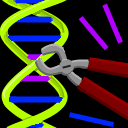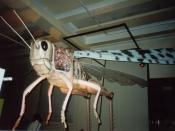Running Head: GENETIC ENGINEERING: THE BATTLE BETWEEN GOOD AND EVIL � PAGE \* MERGEFORMAT �1�
Genetic Engineering: The Battle Between Good and Evil
Abstract
Genetic engineering is an emerging science that comes with moral ambiguity. Opponents fear of a Frankenstein-like evolution of the technology, arguing that modification of animal species, humans, and plants could be environmentally harmful by contaminating wild organisms and morally inappropriate. Supporters of genetic engineering contend that this science will be beneficial to the ever growing world population by increasing food production and helping with the cure of diseases. To prevent this science from spiraling out of control, thorough and thoughtful regulation needs to be implemented. There must be a balance between allowing the new technology to develop while preventing unnecessary and possibly inhumane or harmful uses. The government should take a proactive stance, implementing regulation early enough to avoid possible damages. Most importantly, scientists need to remain cognizant of what they are creating to ensure this technology is useful.
Introduction
Since the deciphering of the genetic code by Nirenberg, Khorana, and others in 1966 (National Human Genome Research Institute, 2012), advances in genetic engineering have skyrocketed. However, humans have been manipulating genes for centuries before. As early as 8000 B.C., humans have been using the concepts of genetics to domesticate crops (Sateesh, 2008). Genetically altered species surround us. A large part of the human diet consists of fruits, vegetables, and meats that have been cross-bred or altered in some way. Thoroughbred horses that compete in the Kentucky Derby were all bred specifically for certain traits that would make them exceptional athletes. Glow in the dark fish have been created by inserting a gene from a jellyfish into that of another fish and a gene from a flounder that is resistant to cold has...


